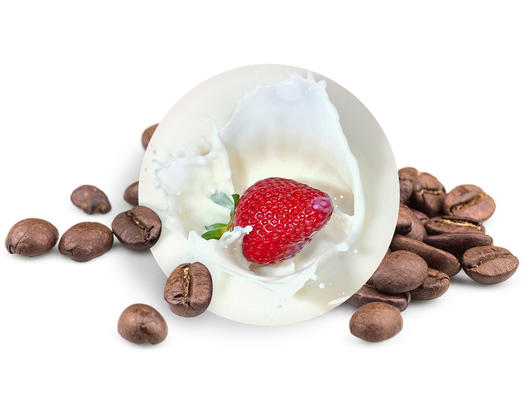cinibeans
MILKY EPER coffee beans
MILKY EPER coffee beans
Couldn't load pickup availability
Take a nap on a strawberry strawberry! Is there a more appealing combination than fresh fragrant fruit and whipped cream? Yes, we've found it: fresh fragrant fruit, whipped cream and 100% Arabica from Peru. One of the finest South American coffees is unique in its own right. And imagine it with strawberries... Place of origin:
Peru
Species:
Typica
Countryside:
Puno Norte
Sea level f. m.:
1900m
Taste:
Cream, Strawberry
Processing:
Wet
Composition
Arabica 100%,
Aroma
The taste and foam of coffee
Coffee has long been flavoured with strawberries. Its pleasant, very refreshing aroma and taste are perfectly matched to the clean, full-bodied 100% Arabica coffee. Low acidity and naturally sweet taste. Add a few drops of milk to soften the coffee taste.
Origin of the coffee
Coffee has been a perfect source of income for Peru since the 18th century. Coffee production is 98 percent taken care of by small farmers who look after their plantations with their families. Coffee from the Puno region is grown in the local hills and mountainsides. Access to the hillsides is complex, which precludes the use of industrial fertilizers and chemical spraying. Therefore, coffee from this region can be considered organic coffee. The popularity of Peruvian coffee is also enhanced by the fact that it is classified as an arabica-typica variety. It has an outstandingly delicate flavour. It is true that it is a lower yielding coffee, but despite this, Typica beans are highly sought after on the world market. The fruit of the coffee bushes is a red cherry-like fruit, harvested several times a year depending on its ripeness. In Peru, the coffee fruit is processed using a technique known as "washing through". This technique is only used for high quality arabica coffee. This is why coffee is sometimes called "washed" or "washed through". The peeling of the berries must be carried out within 24 hours of harvesting. All this is done in water - where the cherries are pressed out of their pulp through special press plates and the beans are then left to ferment in the water (for up to 36 hours). Finally, they are dried in a drier or in direct sunlight.
Coffee cleaned by the washing technique has a fruity, flowery flavour. It is ideal for consumption without flavouring, but also makes an excellent base for flavoured coffee. The beans, which are purchased green, are not roasted until the coffee is ordered. The coffee is flavoured immediately before roasting, when the roaster sprays the beans with natural-based essential oils. We do not use any cheaper method of flavouring the coffee, as it does not guarantee that the flavoured coffee will retain its aroma for a long time.
Preparing flavoured coffee in an automatic coffee machine
If you want to use flavoured coffee in an automatic coffee maker with an automatic dispenser, we recommend that you make sure that this is possible in the manual of the coffee maker. If the machine manufacturer does not provide information on flavoured coffee, please follow the recommendations below.
The natural flavouring that the coffee is flavoured with may react with the plastics in the container and bleach if it comes into contact with them for a prolonged period of time.
Always load only as much flavoured coffee into the coffee machine as you will consume immediately.
After the flavoured coffee has been prepared, the next cup should be unflavoured coffee. This will clean the machine of any residues of natural flavouring agents.
The same rule should be followed when grinding flavoured coffee (manual and electric).
Presentation of coffee packaging
The coffee is packaged in high quality aluminium packaging without any special graphics, as our company focuses on taste and quality. You can also check the actual freshness of the coffee thanks to the valve that releases the gases produced after roasting. Quality packaging that preserves the character of the coffee. Coffee is always hermetically packaged to resist moisture, light and external odours.
Presentation of coffee packaging
Instructions for use
Grind the coffee according to its type.
Use at least 1.5-2 teaspoons (about 7 g) of ground coffee per cup.
Pour off the coffee with water at about 95 °C.

